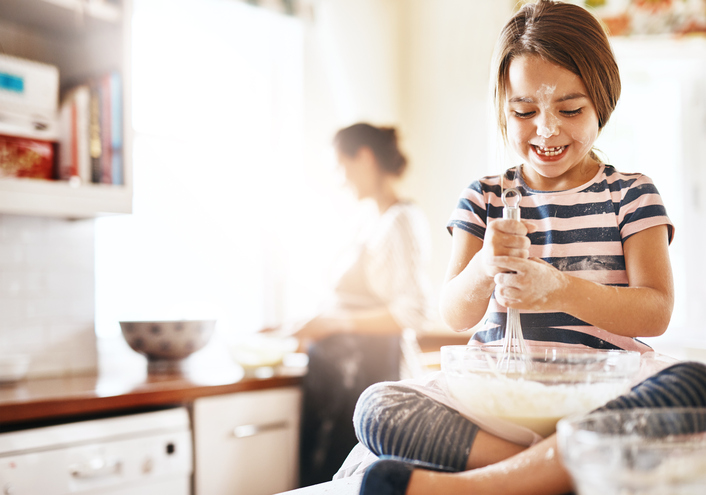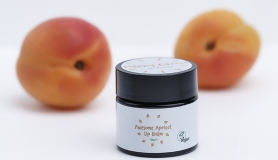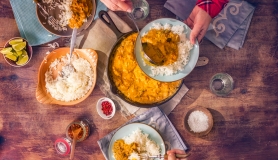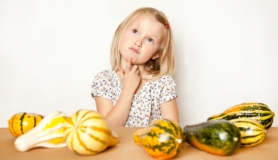Pancake recipes use simple, raw ingredients: eggs, milk, flour and fat. Mastering ‘batter making’ is a great culinary skill but those fluffy Yorkshire puds will come with practice. Early English pancake recipes use ale or wine as well as milk. Today pancakes can be international in flavour. In France streets are scented with vanilla crepes; Americans breakfast on theirs and Canadians add maple syrup. Russians enjoy Blinis using buckwheat flour and the Jewish tradition is to eat crisp Blintzes with sour cream and cinnamon – often at Hanukkah. Pancakes are so useful. They have been enjoyed for centuries, so with Pancake Day coming up now is the time to experiment and have fun in the kitchen. Pancakes freeze well and can be refrigerated for 4-5 days. They are great for filling with leftovers too.
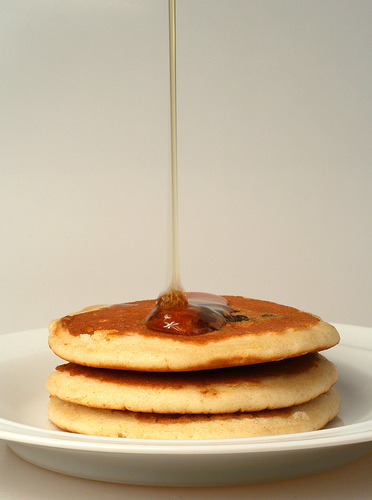
Here is a recipe for Scottish pancakes which younger children might find a little easier than the traditional flat pancake.
Raisin and Lemon Pancakes – Makes 15
Ingredients: Small lemon; 100g self raising flour; 25g unrefined caster sugar; grated rind half lemon; 1 medium egg; 125ml milk; handful raisins; butter for greasing
What you need: Grater/zester; Scales; Sieve; Mixing bowl; Small bowl; Wooden spoon /balloon whisk; Measuring jug; Frying pan; Dessert spoon; Palette knife
What to do:
1. Grate (or use a zester) half of the lemon rind. Carefully turn the lemon as you grate, taking care not to grate the bitter, white pith.
2. Weigh the flour and sift it into the mixing bowl. Add the sugar and lemon rind. Use your fingers to push the ingredients out to the side to leave a small hole.
3. Break the egg into a small bowl and then drop the egg into the ‘flour hole’.
4. Use a small whisk or wooden spoon to beat the egg and gradually draw in a little of the flour.
5. Measure the milk and then little by little, beat it into the egg and flour. Beat the batter well until it is free from lumps.
6. Heat a frying pan and add a little butter. When it has melted drop a dessert spoon of the batter into the pan. As the pancakes begin to set scatter a few raisins on top. Make two pancakes at a time.
7. When the pancakes puff up and start to bubble, flip them over with the palette knife. Cook for another minute until the pancake puffs up and the underside is golden. Repeat until you have used all of the batter, adding butter as necessary.
8. Put the pancakes in a clean tea towel to keep warm.
COOK’S TIP You may find it easier to put your batter into a measuring jug and slowly pour the batter into the frying pan.
Here are a few helpful hints for pancake success:
- The answer lies in the batter. Some suggest using half milk and half iced water; others allow the batter to rest in the fridge overnight. But the key is ‘Practice makes perfect’. A not-too-thick batter that has rested for half an hour works for us.
- Don’t worry if your first effort is less than perfect, pancakes improve as you progress.
- Some cooks suggest never using your pancake pan, for anything else and never washing it. I find that a flat-bottomed frying pan is the answer.
- Keep the pancakes warm as you cook along. For crisp pancakes keep them in a warm oven. For moister ones, place them between two plates over some boiling water, or wrap up in a teatowel.
So get tossing and shape your pancakes to rolls, cornets, triangles or ‘pancake surprise parcels’. Let us know what you make!

